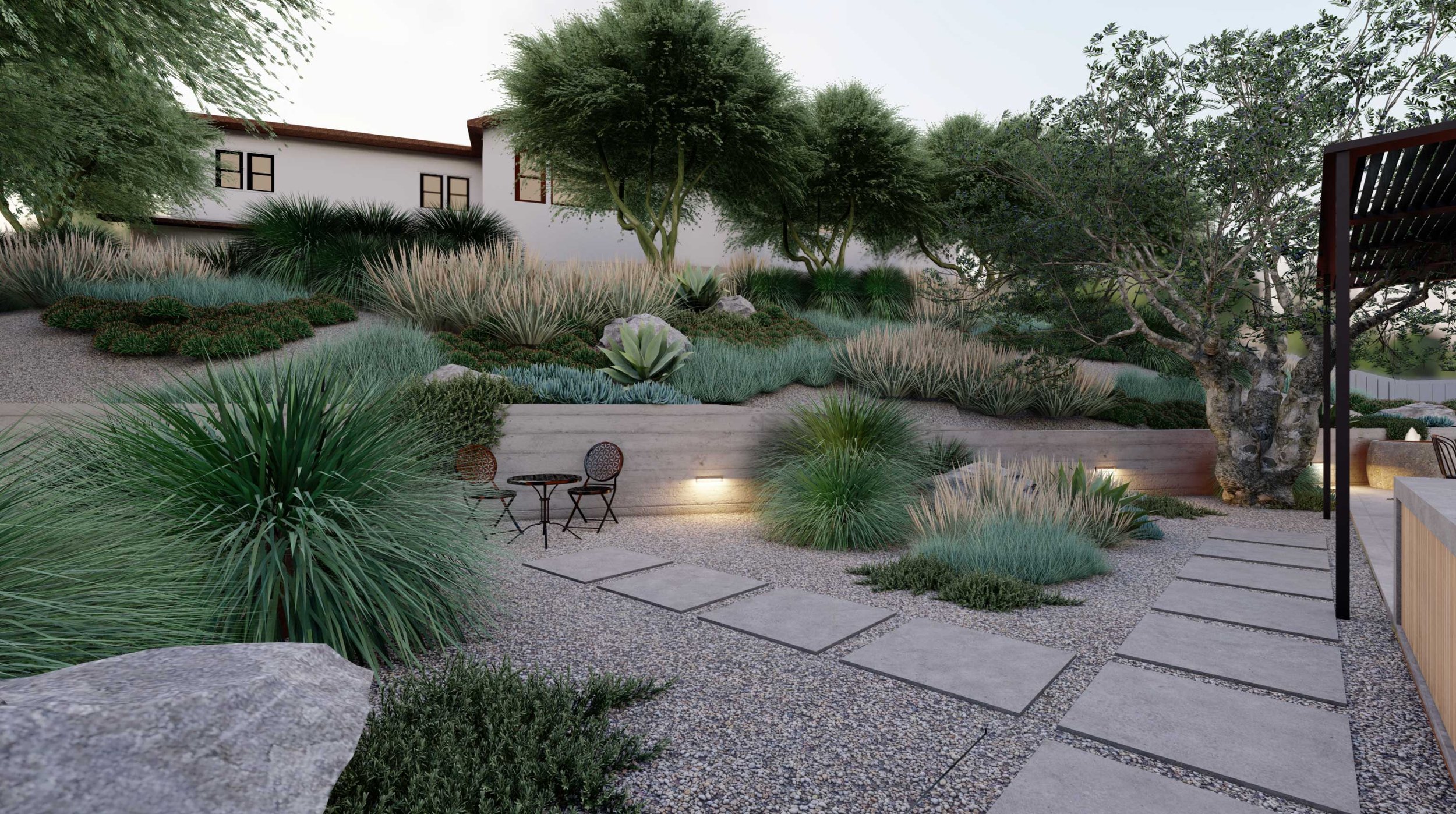Not known Facts About Landscapers
Not known Facts About Landscapers
Blog Article
Getting My Landscapers To Work
Table of ContentsGetting The Landscapers To WorkLandscapers for BeginnersA Biased View of LandscapersOur Landscapers PDFsTop Guidelines Of Landscapers3 Simple Techniques For Landscapers
- A garden feature where water is stood for by an aggregate rock item, usually a gravel or granite. These are most frequently located in contemporary and Japanese yard style.- A stone or flagstone patio area, course, or walkway constructed without a concrete base. The base would be compacted crushed rock and the joints would certainly be an accumulation or walkable ground cover. - A rock preserving or free standing wall surface built without the use of mortar. - A below ground structure that collect water and enables it to slow down percolate right into the dirt around it.
Landscape style that works with a sites' setting in both look and sustainability without negative impacts to the atmosphere. Bordering in the landscape is a line of separation that develops visual passion in the yard by dividing one section from one more segment. This can be aesthetic or useful, keeping one aspect (such as pea gravel) from obtaining combined right into another (like bark dust).
Areas can likewise sense of "room" offered by trees, other growings, fencings, or screens. The landscape near the entry to a structure. A tree, bush or creeping plant, trained to expand on a wall or fencing into a specific pattern. Specifically useful for fruit trees, making it very easy to gather the fruit and including mess.
Getting My Landscapers To Work

The element in a landscape design or location in a landscape that is indicated to be most prominent. The centerpiece can be a plant, stone, statuary, gathering space, or other landscape function. A style of yards or yard components that emphasize straight lines, ideal angles and circles. Bushes or shrubs found in beds near the structure of a home or various other framework.
:max_bytes(150000):strip_icc()/GettyImages-154046398-c39f1daf45a84601b328d78ed8630660.jpg)
Our Landscapers PDFs
Reduced plants that are allowed or urged to spread over an area. Can refer to any type of "tough" garden elements including statuary or stones yet many frequently is used to refer to paths, patio areas, and walls - find more info Landscapers.: Height difference between the degree of water in a pond (or the degree of the pump if it sits outside the pond) and the upper outlet of water which influences efficiency of the water pump in gph (gallons per hour).
Fencing boards that run flat, commonly utilized in contemporary or Japanese-inspired landscape designs. Appropriate usage of imaginary lines can assist the landscape really feel attached to the home and other aspects.
An even more kicked back garden dominated by rounded instead than straight bed lines and a less inflexible structure. Traditional PNW landscapes are casual. A plant that spreads greater than desired, or right into habitats where it does damages. Rose city has a list of intrusive plants that ought to not be mounted in landscapes due to the fact that they can spread out to forests or rivers and be challenging to regulate.
The Facts About Landscapers Revealed
Can include head placements and coverage, pipe sizing, GPM specifications, and materials required to install this system. Certified professional who creates landscapes, educated in engineering and architecture as well as in horticulture.
Landscape developers generally have less schooling than Landscape Architects and are not licensed. A completed landscape layout, describing all components for the new landscape.
Making use of lots of plantings of the exact same range to fill up in a location in the landscape. This can decrease maintenance and water usage in the yard.
A layer of garden compost or bark dirt applied at the base of a plant. A plant that was present in a geographical place prior to people started changing the landscape.
The smart Trick of Landscapers That Nobody is Discussing
Exactly how the garden or a yard component is set up in relationship to an existing or brand-new feature or to a direction. Grasses that are not trimmed yet expanded in landscapes as perennials.

Tiny round gravel. Plants that give seasonal interest and after that die back in the winter. Annuals do not return the adhering to season, however perennials do. Cold season yard that is the most typical turf grass in Rose city, OR et cetera of the PNW.An open roofed structure over a patio or other landscape feature.
The most typical landscape crushed rock in the PNW. Area of the landscape developed to deal with rainfall water up until it can soak into the ground.
Developing a garden function being composed largely of stones with growings that complement and can grow in the rocky atmosphere. Sprinkler head click here for info style that turns a stream of water throughout an area.
The smart Trick of Landscapers That Nobody is Discussing

Report this page